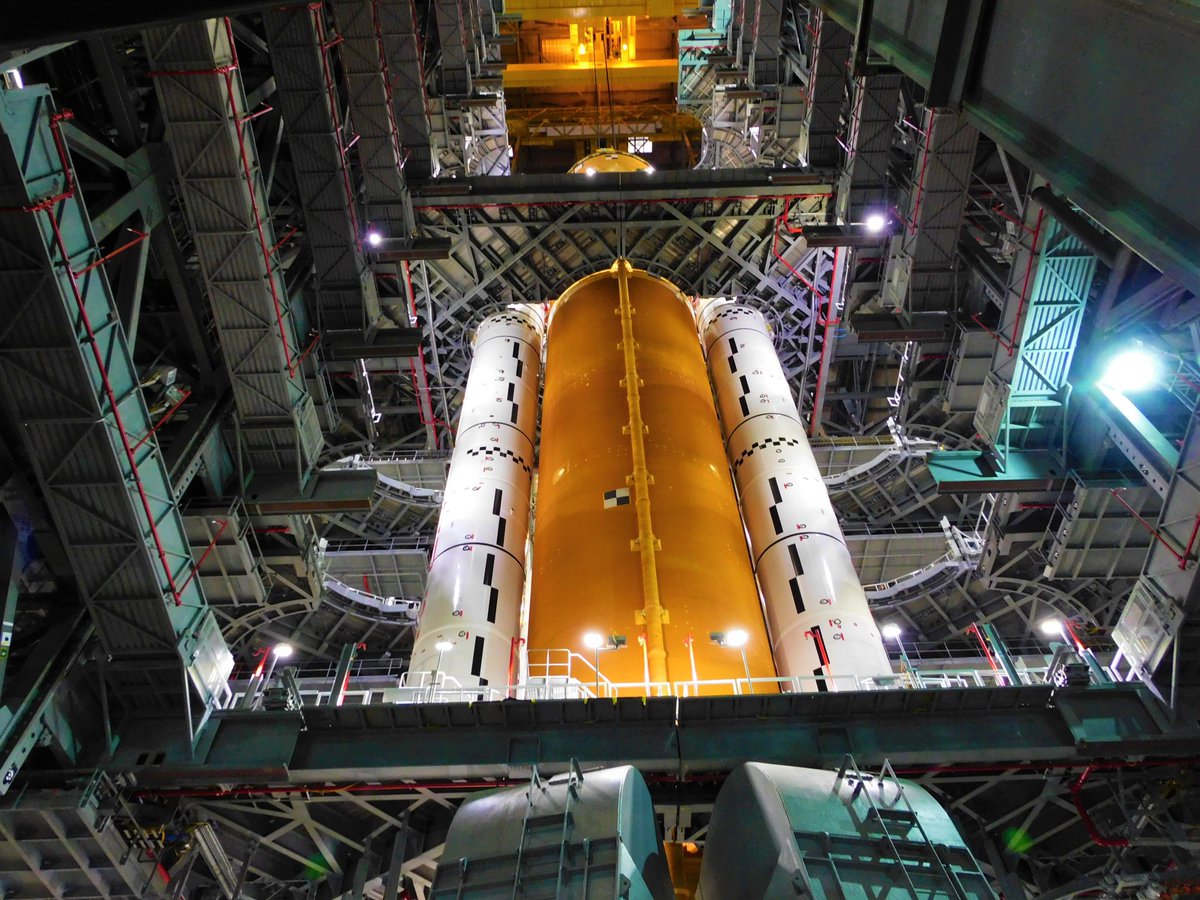
For SpaceUpClose.com & RocketSTEM
KENNEDY SPACE CENTER, FL – The first ever built and truly mammoth 212 foot tall core stage for NASA’s Space Launch System (SLS) mega rocket was at last raised vertical inside the iconic Vehicle Assembly Building (VAB) this past weekend and then raised high and stacked in between the two twin 177 foot tall solid rocket boosters already stacked atop the Mobile Launch Platform at NASA’s Kennedy Space Center (KSC) in Florida destined for launching the Artemis 1 mission to the Moon as soon as late 2021.
The massive core stage is the largest booster ever built and weighs over 188,000 pounds unfueled and now stands atop the launch platform in High Bay 3 inside the VAB for the first time ever- marking a major milestone on the path to first launch on Artemis 1.
NASA released a new photo of the 1st SLS core stage and twin booster stack for Artemis 1 mission on Monday, June 14.
“Up Close & Personal: The @NASA_SLS #Artemis I core stage on the mobile launcher in High Bay 3 of the Vehicle Assembly Building at @NASAKennedy. Weighing more than 188,000 lbs without fuel and standing 212 feet, the core stage is the largest part of the Space Launch System rocket,” NASA confirmed.
Up Close & Personal: The @NASA_SLS #Artemis I core stage on the mobile launcher in High Bay 3 of the Vehicle Assembly Building at @NASAKennedy. Weighing more than 188,000 lbs without fuel and standing 212 feet, the core stage is the largest part of the Space Launch System rocket. pic.twitter.com/hmV6ISFfL9
— NASA's Exploration Ground Systems (@NASAGroundSys) June 14, 2021
Engineers and technicians carried out the core stage hoisting and stacking late last week and continued into the weekend.
“Teams successfully lowered the @NASA_SLS core stage down onto the mobile launcher in between the already assembled twin solid rocket boosters. Weighing more than 188,000 pounds without fuel and standing 212 feet, the core stage is the largest element of the SLS rocket,” NASA confirmed via tweet.
✅ Teams successfully lowered the @NASA_SLS core stage down onto the mobile launcher in between the already assembled twin solid rocket boosters.⁰
🤯 Weighing more than 188,000 pounds without fuel and standing 212 feet, the core stage is the largest element of the SLS rocket. pic.twitter.com/HX1mhzUMzb— NASA's Kennedy Space Center (@NASAKennedy) June 12, 2021
Liftoff of the uncrewed Artemis 1 mission is slated for no earlier than (NET) late 2021 from Launch Complex 39B at NASA KSC on the first in a series of increasingly complex missions to test the SLS heavy lift mega rocket and Orion crew capsule as an integrated system prior to crewed flights to the Moon starting with Artemis 2.
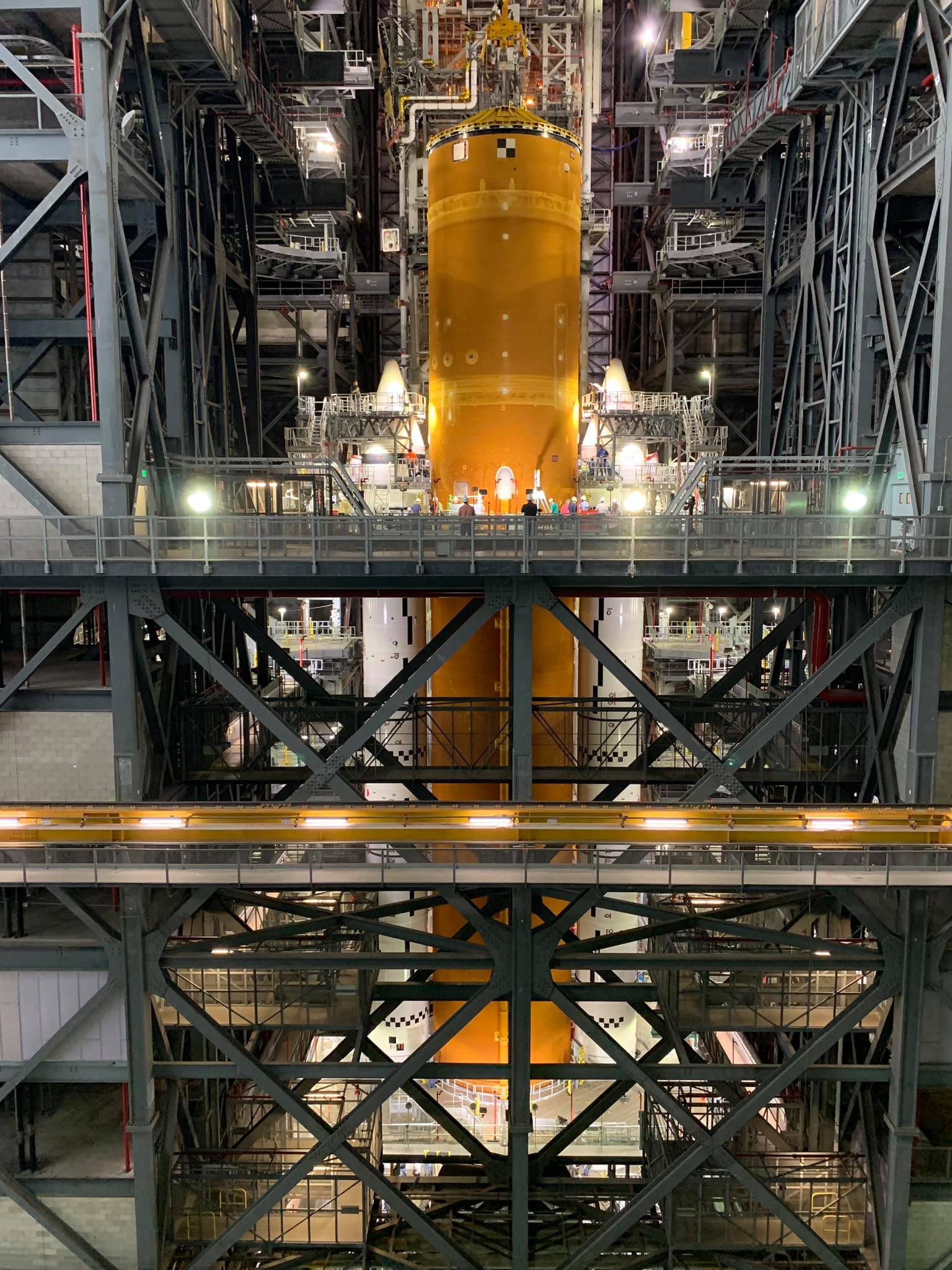
This first SLS core stage had arrived on NASA’s Pegasus barge April 27 and was then rolled off the barge and into VAB two days later on April 29 for the extensive stacking and preparatory operations for launch on the history making Artemis 1 mission to deliver NASA’s Orion deep space human rated capsule to the Moon.
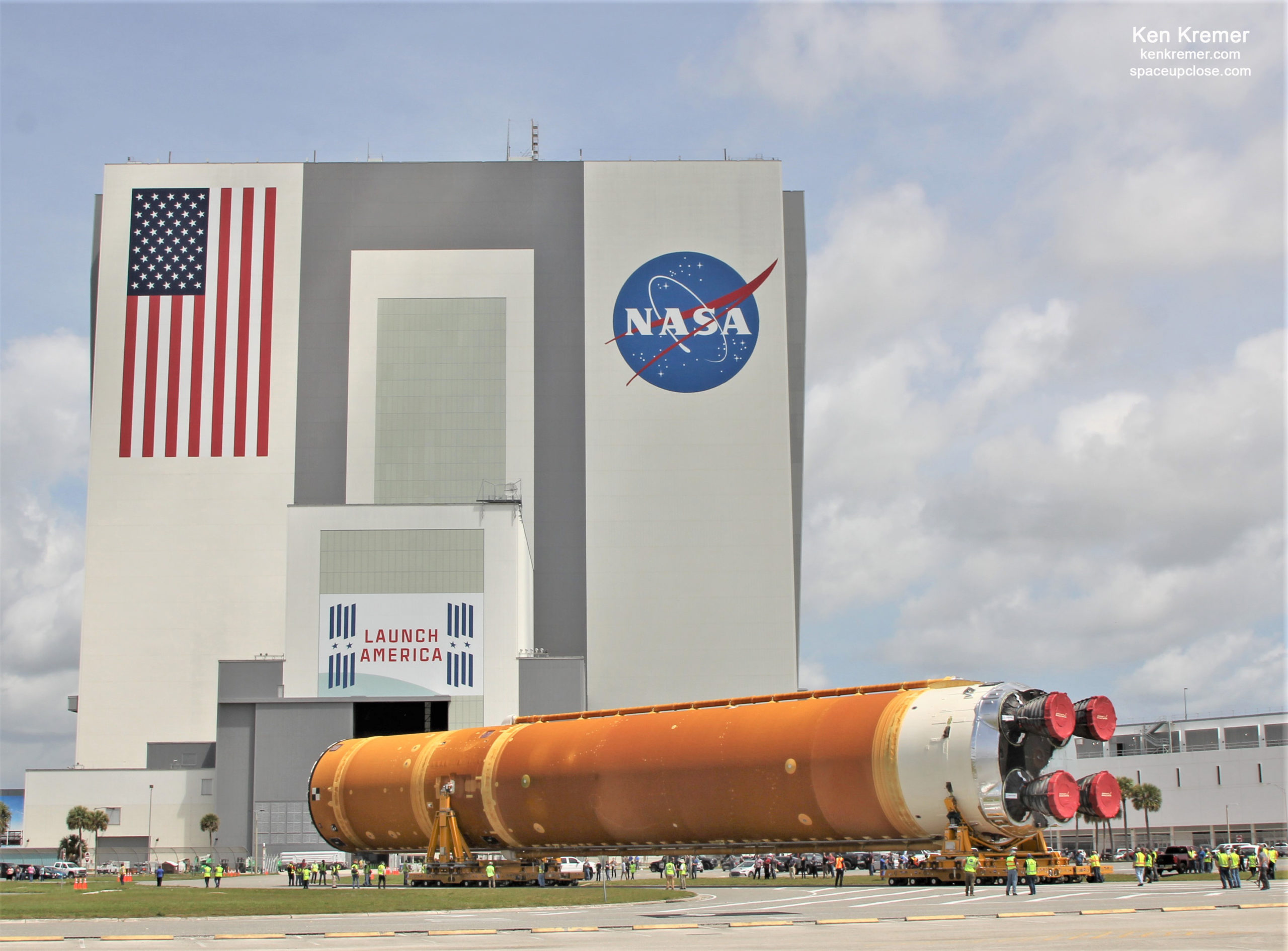
The overall stacking process began on June 11 when technicians with NASA’s Exploration Ground Systems team lifted the 21 story core stage by first hoisting it horizontal off the transporter inside the VAB transfer aisle and then rotated it vertical.
“Things are looking up around here! Teams have rotated the @NASA_SLS core stage – the largest part of the rocket – into a vertical position. Soon, they will lift up the core stage and lower it down into High Bay 3 to join the twin solid rocket boosters on the mobile launcher,” NASA confirmed via tweet on June 11.
Things are looking up around here! 🚀
Teams have rotated the @NASA_SLS core stage – the largest part of the rocket – into a vertical position. Soon, they will lift up the core stage and lower it down into High Bay 3 to join the twin solid rocket boosters on the mobile launcher. pic.twitter.com/tTZcg64V2e
— NASA's Kennedy Space Center (@NASAKennedy) June 11, 2021
Watch this cool timelapse video showing the lifting and core stage going vertical in the VAB transfer aisle in preparation for later stacking vertical in High Bay 3 in between the twin solid rocket boosters
“Engineers with Exploration Ground Systems and @JacobsConnects lifted the @NASA_SLS rocket core stage for the @NASAArtemis I mission in the Vehicle Assembly Building at @NASAKennedy . Check out this timelapse from operations,” NASA tweeted.
Engineers with Exploration Ground Systems and @JacobsConnects lifted the @NASA_SLS rocket core stage for the @NASAArtemis I mission in the Vehicle Assembly Building at @NASAKennedy. Check out this timelapse from operations. pic.twitter.com/Vnv6GnJ7VX
— NASA's Exploration Ground Systems (@NASAGroundSys) June 11, 2021
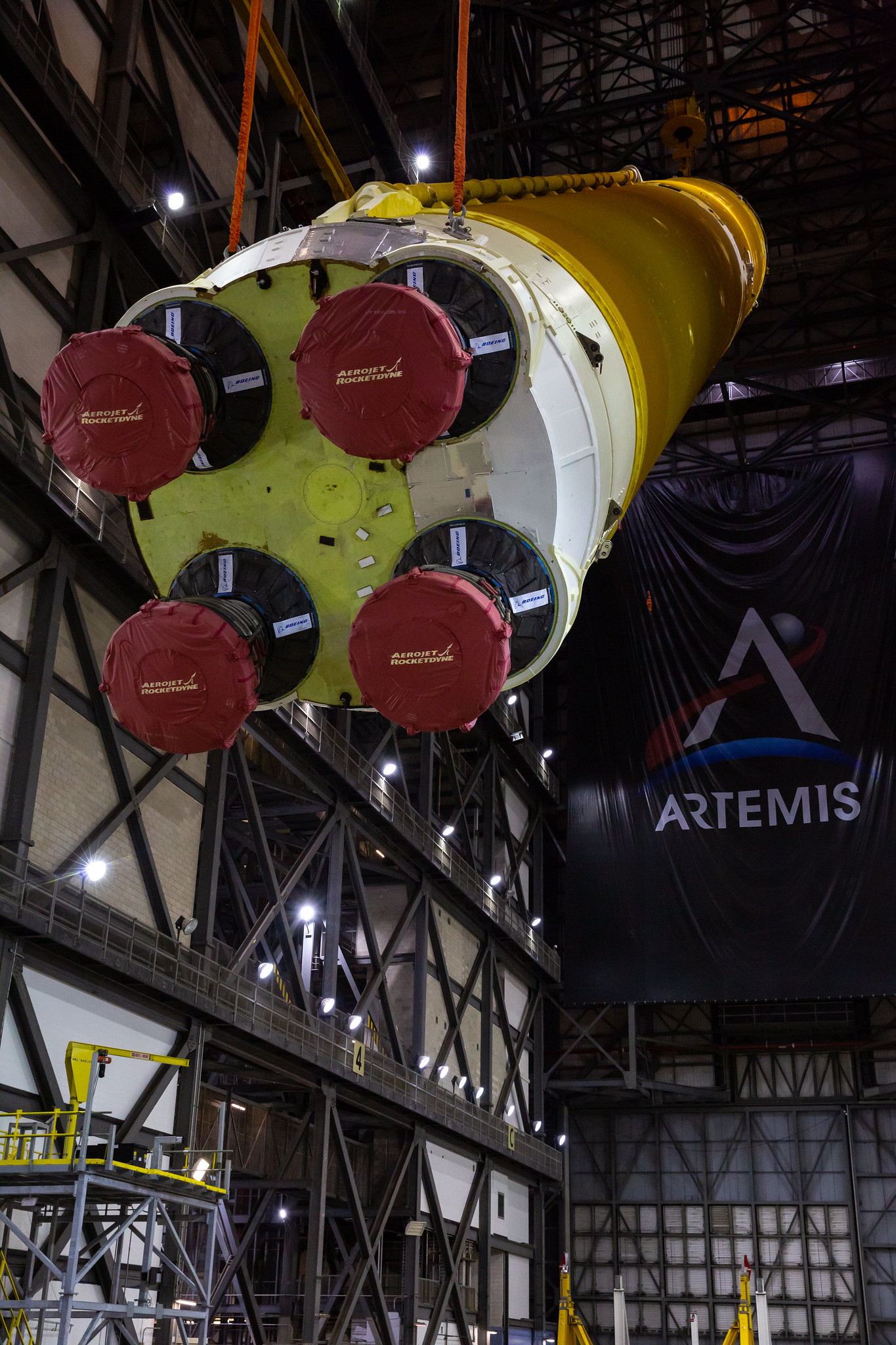
This post explains how the SLS rocket is stacked:
How do crews assemble a rocket and spacecraft as tall as a skyscraper? 🚀@NASA's latest Tumblr post explains how the @NASAArtemis Moon rocket for the #Artemis I mission will come together this summer >> https://t.co/7AiAUpKK2r pic.twitter.com/gzk6FtAx1X
— NASA_SLS (@NASA_SLS) June 11, 2021
SLS is the most powerful rocket the world has ever seen generating some 8.8 million pounds of liftoff thrust at ignition – about 15% more powerful than NASA’s legendary Saturn V that hurled the first humans to land on the Moon back in 1969 on the Apollo 11 moon landing mission.
The 21-story tall core stage covered in orange foam insulation also counts as the largest and most powerful rocket stage NASA has ever built.
The SLS core stage is the final piece of NASA’s Space Launch System (SLS) rocket to arrive at KSC – and will propel NASA’s Artemis I mission to the Moon on a launch still targeted by NASA for late 2021 but that could slip into early 2022 considering the huge amount of processing and preparation work still ahead.
The decade in the making Boeing built Artemis 1 core stage safely arrived by barge at KSC in Florida after a 900-mile journey from the agency’s Stennis Space Center near Bay St. Louis, Mississippi
The maiden 212-foot-tall (64.6-meter) SLS core stage arrived aboard the specially designed and elongated 310-foot-long (94.4 meters) Pegasus barge and was towed into the Launch Complex 39 turn basin wharf on a sunny afternoon April 27 berthing adjacent to the iconic VAB and passing by the proudly fluttering US Flag and world famous Countdown Clock.

Both of the 177-foot-tall (54-meter) Northrop Grumman built solid rocket boosters (SRBs) were already stacked on the rocket’s mobile launch platform in High Bay 3 in the VAB and are awaiting the core stage.
The high bay crane was used to hoist and lower the core stage to place it in between the already stacked SRBs
See the NASA graphic below explain the SLS/Orion integration and stacking operation in the VAB in detail.
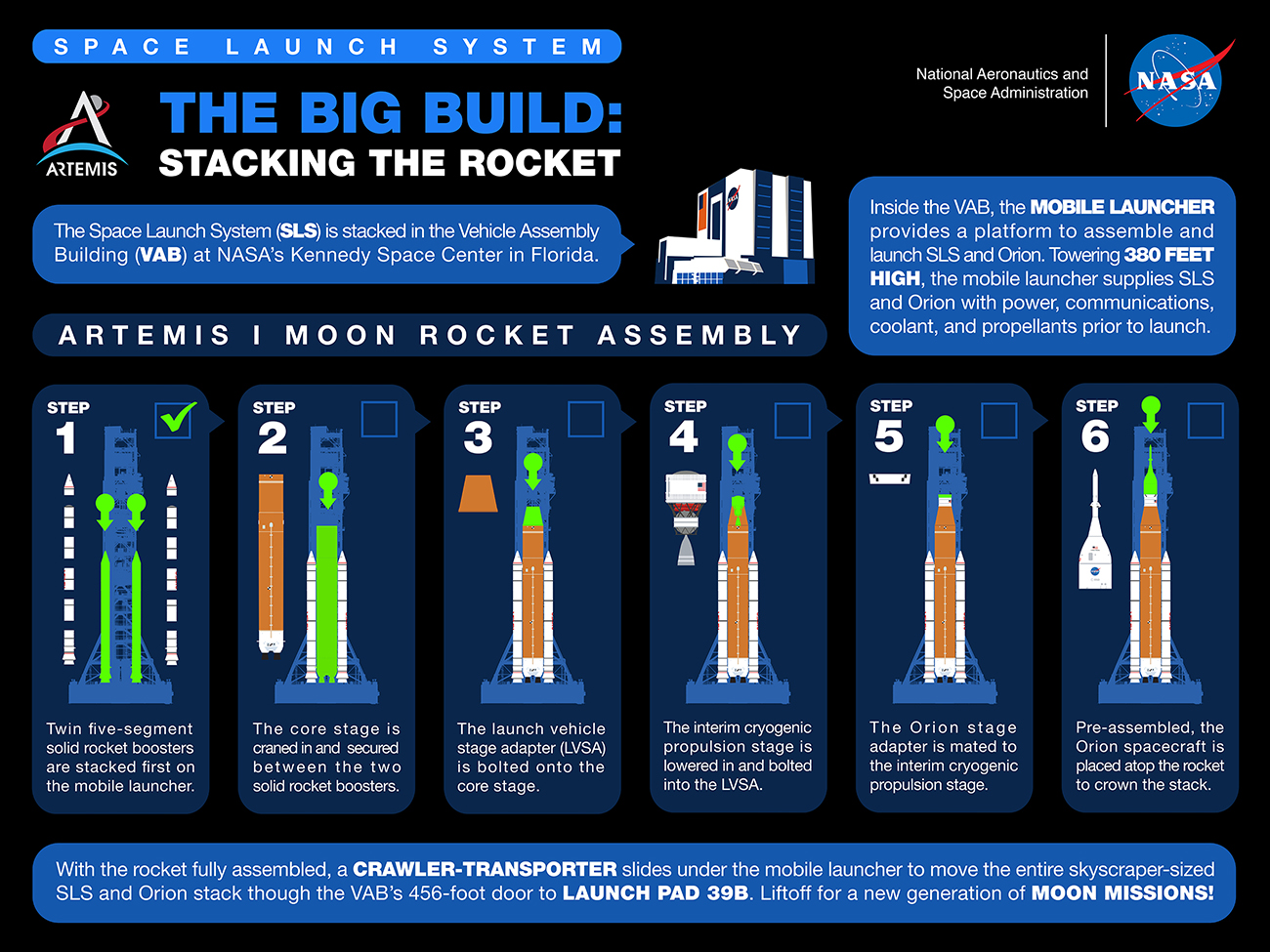
Upcoming later this summer and fall are attachment and mating of the launch vehicle stage adapter (LVAS), the interim cryogenic propulsion upper stage from ULA and the Lockheed Martin built Orion deep space capsule and numerous test and checkout operations to confirm all is well.
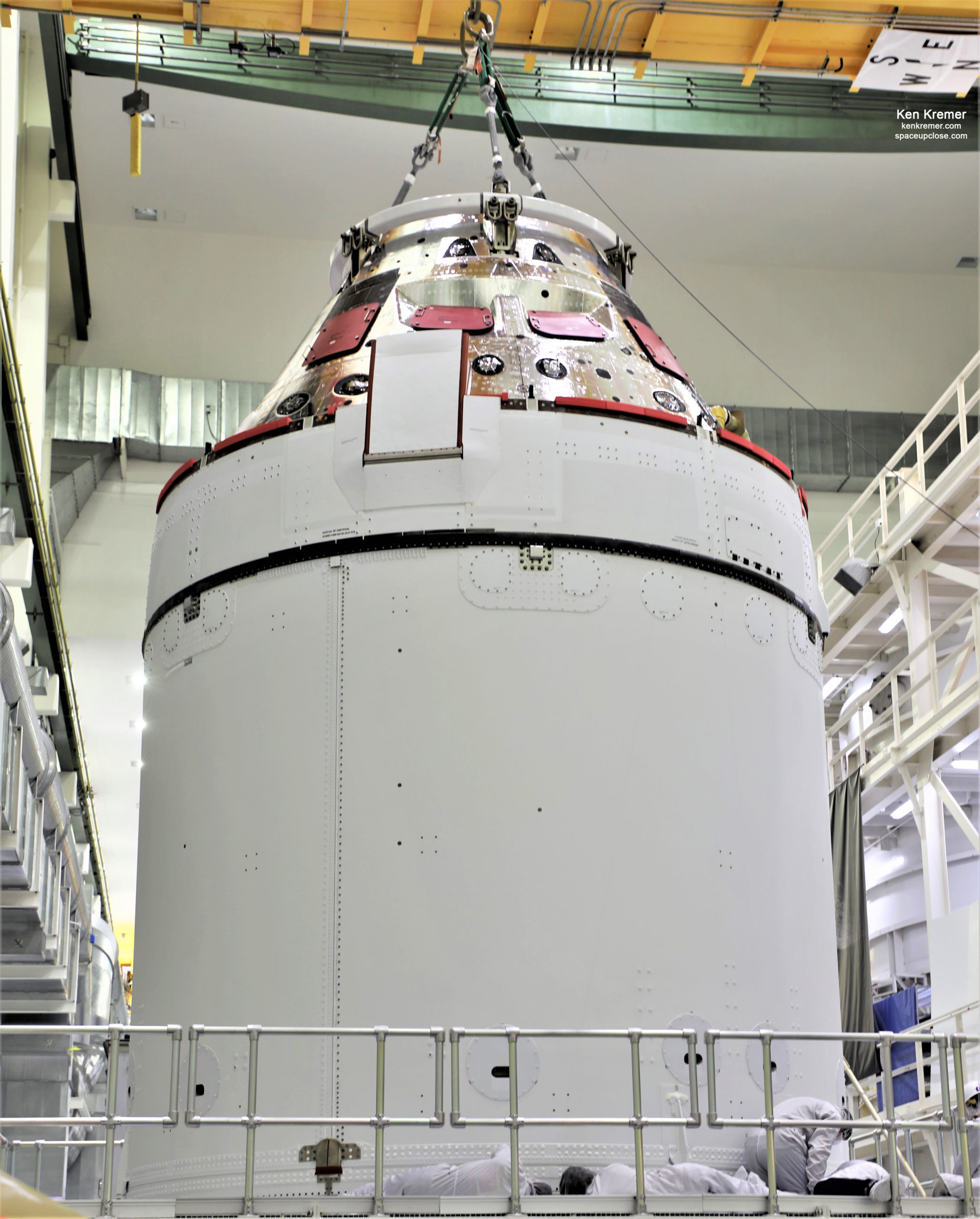
But before the real Artemis 1 Orion is stacked engineers will stack a mass simulator in its place and conduct systems and stacking shaking tests to confirm all is operating as expected
Previously KSC technicians has used a core stage mass simulator to practice the SLS lifting and stacking operations
SLS serves as the backbone of the Artemis program and the nation’s future deep space exploration missions.
The SLS core stage measures 212 feet tall and 27.6 feet in diameter.
Overall SLS stands 322 feet (98 meters) tall and weighs 5.75 million pounds
It is equipped with four Aerojet-Rocketdyne built RS-25 engines fueled by over 730,000 gallons of cryogenic super cold LOX (liquid oxygen) and LH2 (liquid hydrogen) propellants to generate some 2 million pounds of liftoff thrust to help power the SLS rocket at launch.

SLS was built by prime contractor Boeing at NASA’s Michoud Assembly Facility in New Orleans.”
The RS-25 engines are attached to the base of the core stage and are recycled from the Space Shuttle where they were reused and reflown numerous times.

Previously known as the Space Shuttle Main Engine, or SSME, they have been refurbished and upgraded in numerous ways including with a new ‘brain controller’ and can fire at 109% thrust
Watch Ken’s continuing reports about Artemis and NASA missions, SLS, Orion, Mars 2020 Perseverance and Curiosity rovers, SpaceX, ULA, Starlink, Commercial Crew and Starliner and Crew Dragon and onsite for live reporting of upcoming and recent SpaceX and ULA launches including Crew 1 & 2, Demo-2, ISS, X-37B, Solar Orbiter, NRO spysats and national security missions and more at the Kennedy Space Center and Cape Canaveral Space Force Station.
Stay tuned here for Ken’s continuing Earth and Planetary science and human spaceflight news: www.kenkremer.com –www.spaceupclose.com – twitter @ken_kremer – email: ken at kenkremer.com
Dr. Kremer is a research scientist and journalist based in the KSC area, active in outreach and interviewed regularly on TV and radio about space topics.
………….
Ken’s photos are for sale and he is available for lectures and outreach events
Please consider supporting Ken’s work by purchasing his photos and/or donating at Patreon or Paypal:
https://www.patreon.com/kenkremer
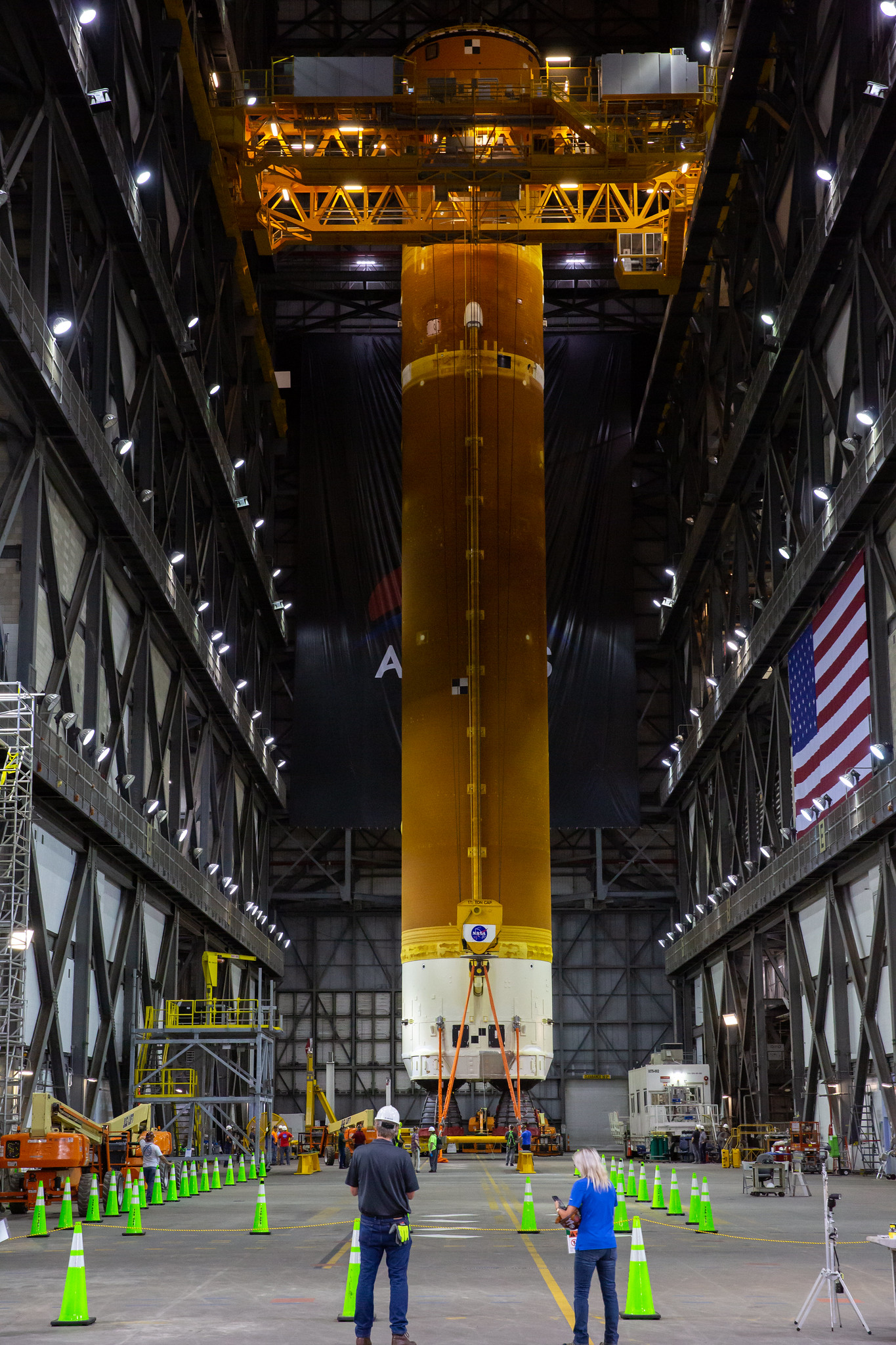

x



